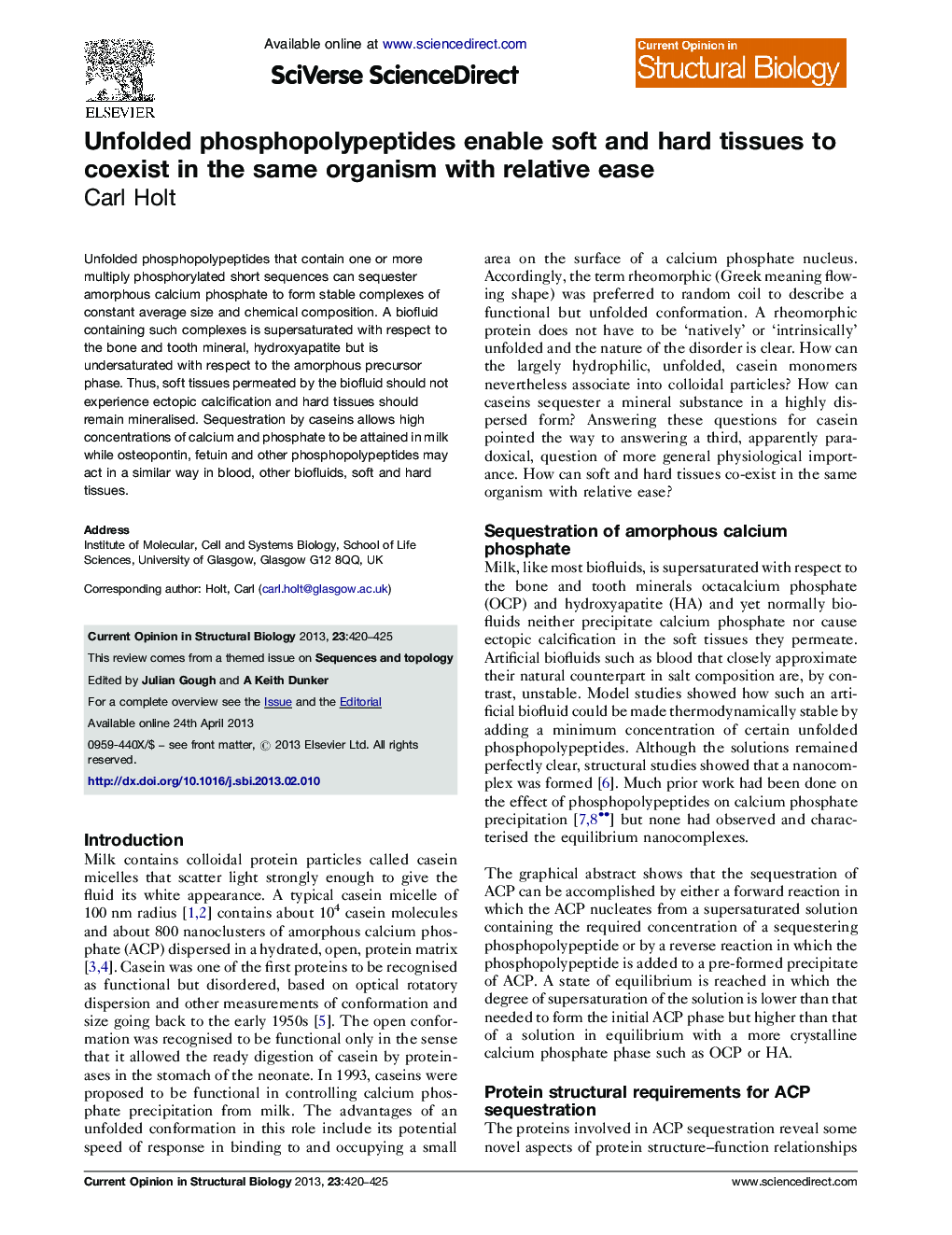| کد مقاله | کد نشریه | سال انتشار | مقاله انگلیسی | نسخه تمام متن |
|---|---|---|---|---|
| 1979133 | 1061661 | 2013 | 6 صفحه PDF | دانلود رایگان |

Unfolded phosphopolypeptides that contain one or more multiply phosphorylated short sequences can sequester amorphous calcium phosphate to form stable complexes of constant average size and chemical composition. A biofluid containing such complexes is supersaturated with respect to the bone and tooth mineral, hydroxyapatite but is undersaturated with respect to the amorphous precursor phase. Thus, soft tissues permeated by the biofluid should not experience ectopic calcification and hard tissues should remain mineralised. Sequestration by caseins allows high concentrations of calcium and phosphate to be attained in milk while osteopontin, fetuin and other phosphopolypeptides may act in a similar way in blood, other biofluids, soft and hard tissues.
Figure optionsDownload high-quality image (139 K)Download as PowerPoint slideHighlights
► Some unfolded phosphoproteins form stable complexes with amorphous calcium phosphate.
► Stable complexes require ≥3 phosphorylated residues within a short sub-sequence.
► Soft and hard tissues can co-exist in the same organism because of these complexes.
Journal: Current Opinion in Structural Biology - Volume 23, Issue 3, June 2013, Pages 420–425